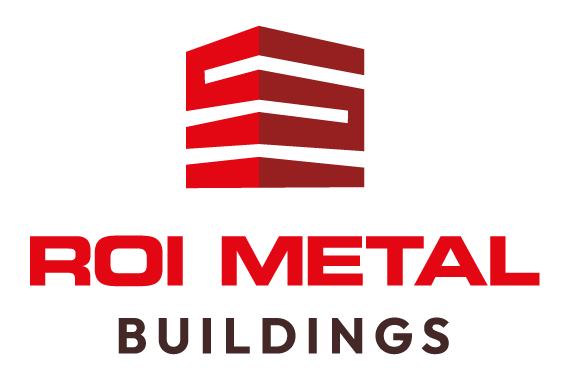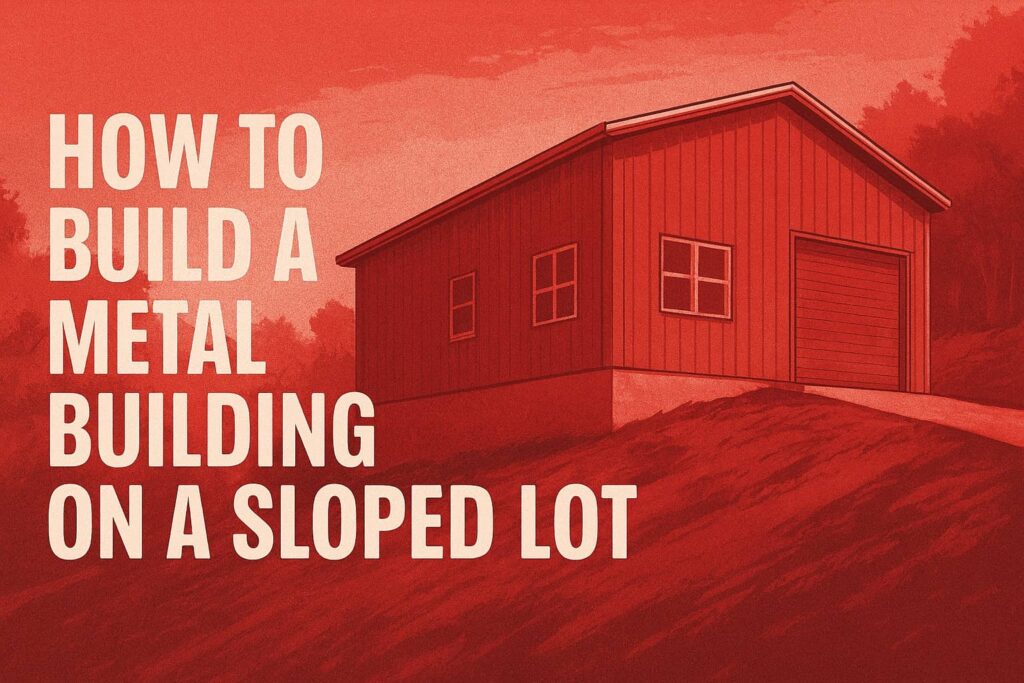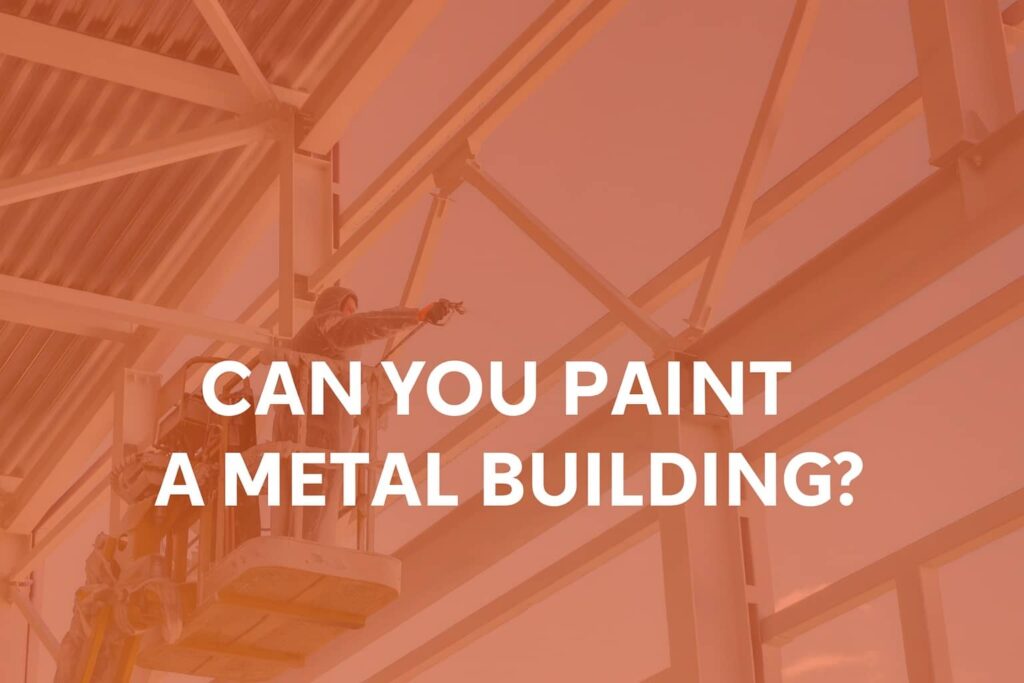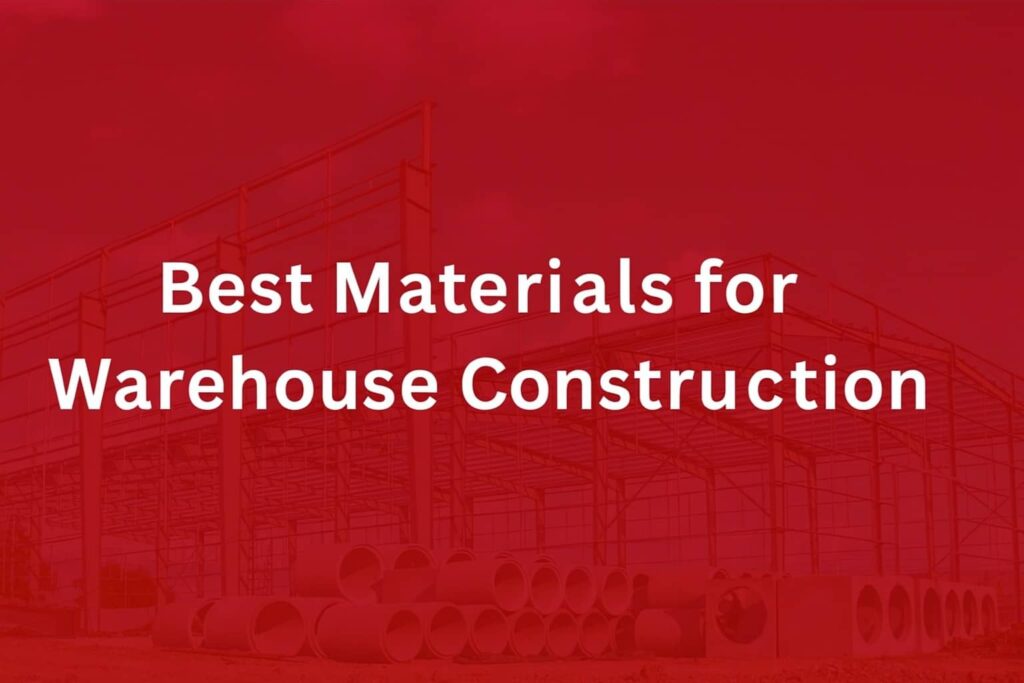Stepping into the dream of a private metal equestrian building can be both exhilarating and daunting. With so many different types of equestrian buildings, it’s easy to get analysis paralysis. Many equestrian enthusiasts also find themselves lost in a sea of local regulations and permitting procedures, causing unnecessary stress and delays. Tackling these challenges head-on is key to turning that dream structure into reality.
To help you navigate this complex process, we’ve crafted a comprehensive guide filled with detailed steps and crucial insights. From understanding local building codes to preparing precise site plans, each aspect is carefully covered to prevent common missteps. This journey through permitting need not be an obstacle course; it can indeed be smooth sailing with the right information at hand. Let’s begin by delving into how you can research and gather all necessary information from your local municipal planning department.
This article is the first of our new series about private residence metal equestrian buildings. For the last several weeks, we have been writing in great detail about residential metal garage buildings. Stay tuned over the coming weeks as we take the same approach with this series. If you’ve followed our articles in the past, you know the value that’s hidden within these articles. If you’re planning on adding a private equestrian to your property, look no further than ROI Metal Buildings for all of the crucial information to get started!
The process for obtaining building permits for private metal equestrian buildings varies by location and local regulations. We recommend consulting with your local building department or a qualified professional to ensure compliance with zoning, construction, and safety codes.
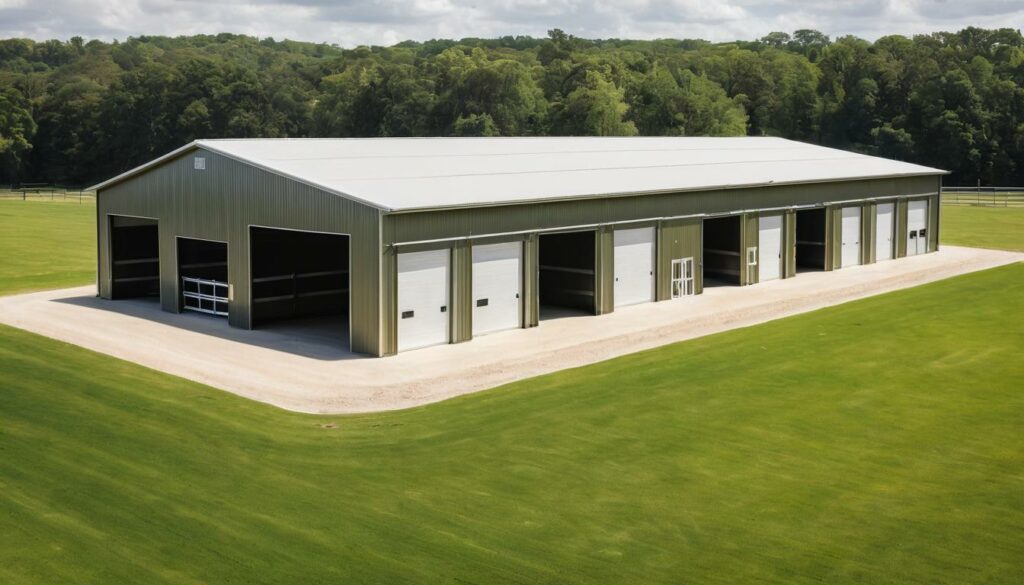
Obtaining a Building Permit for an Equestrian Building
Building permits play a crucial role in ensuring that the structure meets safety standards and local regulations. When it comes to equestrian buildings, the process involves several precise steps to obtain the necessary permit.
The first step involves thorough research on local regulations and requirements. This can be done by visiting the local municipal planning or building department to gather important information about the specific permits required for equestrian buildings. Understanding the local building codes and regulations will form the foundation for a smooth permitting process. Remember, different areas may have specific rules regarding stable structures, so it’s essential to be well-informed about these regulations before proceeding with your application.
Once you have a clear understanding of the local requirements, the next step involves preparing your building permit application, including completing and submitting an application form detailing various aspects of the proposed equestrian building, such as its dimensions and construction materials. Additionally, diagrams and blueprints are often necessary to provide a comprehensive overview of the planned structure. These detailed plans help the authorities visualize the proposed building and assess its compliance with building codes and safety standards.
In tandem with your application, including a detailed site plan is crucial. This plan should showcase the exact location of the equestrian building on your property, taking into account setbacks, access roads, and utilities. By providing a clear site plan, you demonstrate that the proposed equestrian building aligns with zoning laws and doesn’t encroach on any restricted areas. This demonstrates to the authorities that you’ve carefully considered the placement of your structure within your property boundaries.
Most municipalities require an application fee to be paid along with the submission of your application, with the amount varying significantly based on factors such as project size and scope. Application fees typically range from around $50 for smaller projects to several hundred dollars for larger endeavors. It’s important to budget for this cost when planning for your equestrian building project.
Following the submission of your application, it undergoes a review process by local authorities, which can take several weeks as they meticulously assess all aspects of your proposed equestrian building. Be prepared to address any additional questions or requirements that may arise during this review period. Ensuring clear communication and prompt action in response to any requests from the authorities can help expedite the approval process.
Overall, each of these meticulous steps ensures that your equestrian building project aligns with local regulations, prioritizes safety, and secures the necessary approvals for construction to commence in accordance with legal requirements.
With a firm understanding of the foundational steps involved in obtaining a building permit for an equestrian building, let’s now dive into further details regarding permit requirements and zoning authorities.
Permit Requirements and Zoning Authorities
When it comes to planning and constructing an equestrian building, understanding your property’s zoning classification is crucial. Different zones have different rules, and certain zones may be more suitable for agricultural or equestrian use than others. It’s essential to verify that your property is zoned for the type of structure you intend to build, ensuring compliance with local land-use regulations.
For instance, in some areas, there might be specific zoning districts designed for equestrian activities to accommodate the unique needs of equine facilities. These districts may outline regulations related to the size of buildings, setbacks from property lines, and even provisions for accessory structures such as barns and stables. Understanding these zoning designations will help determine whether your intended equestrian building aligns with the permitted land uses in your area.
Engaging with local zoning authorities early in the planning process can provide valuable insights into any specific regulations or restrictions that apply to your proposed equestrian structure. These authorities can offer guidance on zoning ordinances, setback requirements, height restrictions, and other parameters that dictate permissible building characteristics. By consulting with zoning boards or authorities, you can gain clarity on any necessary variances or special permissions required to ensure compliance with land-use regulations.
Moreover, zoning authorities may also provide information on conditional use permits (CUPs) or special exceptions if your intended equestrian building falls outside the standard zoning parameters. This proactive engagement with zoning officials can help streamline the permitting process by addressing any potential regulatory hurdles early on.
In addition to zoning considerations, it’s imperative to assess environmental regulations that could impact your equestrian building project. Proximity to wetlands, water bodies, or protected lands may introduce additional permitting complexities due to ecological conservation measures. Certain jurisdictions have stringent regulations governing development near environmentally sensitive areas, requiring thorough assessments of potential impacts and mitigation measures.
Understanding and adhering to environmental regulations are integral parts of securing the necessary permits for your equestrian building. It involves a comprehensive evaluation of how the project might interact with the surrounding natural environment and ensuring that all applicable environmental standards are met.
These considerations form the foundation for a well-planned and legally compliant construction process.
Navigating through the intricate landscape of zoning classifications, engaging with local zoning authorities, and ensuring compliance with environmental regulations are pivotal aspects of obtaining the requisite permits and approvals for your private metal equestrian building. These considerations form the foundation for a well-planned and legally compliant construction process.
Legal Considerations and Construction Codes
Building codes serve as the guidelines your building must adhere to, ensuring construction safety and durability. These regulations vary from town to town, making it crucial to understand and apply the specific codes relevant to your location.
Familiarize Yourself with the Building Codes
Building codes encompass various aspects such as approved materials, structural assembly, and specific safety measures for equestrian buildings including ventilation, flooring safety, and fire protection—essential for the well-being of your horses.
Note: Paying attention to these specifics is critical as it directly impacts the safety and security of your equine companions.
Electrical safety is paramount; therefore, ensuring proper wiring to prevent fire hazards is vital. Additionally, plumbing adherence to code standards is equally imperative for preventing leaks.
Seek Professional Expertise
Given the complexity of building codes, engaging an architect or engineer well-versed in these regulations can be immensely beneficial. Their expertise will assist in designing a stable that aligns with all necessary rules and requirements.
Moreover, their support during inspections will provide peace of mind, ensuring compliance throughout the construction process.
Obtain Mandatory Inspections
Throughout construction, periodic inspections are conducted to verify adherence to building codes. These may occur after pouring the foundation or once the walls are erected but before being covered.
The primary goal of these checks is to ensure everyone’s safety by guaranteeing compliance with regulations and standards.
Understanding and adhering to building codes isn’t merely a protocol—it’s vital for the safety of everyone involved. By comprehending and following these regulations, you not only ensure compliance but also prioritize the safety and reliability of your equestrian facility for all its users.
Assessing the Cost of Equestrian Permits
Determining the cost of equestrian permits is a fundamental aspect of planning for your project. It’s important to know what to expect financially before diving into the permit application process. Permit fees can vary significantly based on several factors, and having a comprehensive understanding of these costs will allow you to budget accurately and plan for any additional expenses that may arise along the way.
It’s essential to start by breaking down the permit fees associated with equestrian buildings in your specific area. This breakdown typically includes fees for plan reviews, inspections, and impact fees. These costs can add up, so having a clear picture of what you need to budget for enables you to avoid unexpected financial surprises along the way.
For instance, in some areas, impact fees might be required to mitigate any potential negative effects that your project could have on public facilities or infrastructure. Having a good understanding of these fees will allow you to consider possible additional expenses and ensure that they are factored into your overall budget.
Furthermore, it’s crucial to compare fee structures across different municipalities. Some charge building permit fees based on the size of the building, while others might calculate costs based on the overall valuation of the project. Understanding these variations will help you anticipate costs more accurately and make informed decisions as you move through the permit application process.
For example, in a rural area, fees might be structured differently compared to an urban setting due to differences in regulations and requirements. By being aware of these differences, you can factor them into your cost considerations and better understand how they might impact your overall budget.
In addition to basic permit fees, it’s crucial to factor in any potential additional costs that may arise during the permitting process. Larger or more complex projects may require environmental impact assessments or public notice expenses. Understanding these possible additional costs will empower you to effectively plan for them in your budget.
Remember that each jurisdiction may have its own unique set of requirements and associated costs. By doing thorough research and obtaining a comprehensive breakdown of permit fees and additional expenses specific to your area, you’ll be better equipped to budget accurately and strategically plan for the financial aspects of your equestrian building project.
Thoroughly assessing the cost of equestrian permits paves the way for effective financial planning and ensures that you’re well-prepared for all associated expenses during the permitting process.
Contractor Costs and Budgeting
Once you’ve secured the necessary permits and permissions, the next step is to make decisions about hiring contractors and budgeting for your project. Hiring the right contractor with a good understanding of equestrian building requirements is crucial to ensure the safety of your horses and the overall success of your building. Equally important is creating a comprehensive budget that accounts for all potential costs and ensures that you are financially prepared for any unexpected expenses. Let’s break down these two critical aspects in detail.
Hire Experienced Contractors
When it comes to equestrian buildings, expertise in ventilation, layout, material choice, and safety measures for the well-being of the animals is crucial. Therefore, it’s imperative to hire professionals who understand these unique needs and have experience in meeting equine safety standards when constructing metal equestrian buildings. Look for contractors who can provide references from previous equestrian building projects, demonstrating their capability in delivering high-quality workmanship while adhering to safety guidelines.
Obtain Detailed Quotes
Obtaining detailed quotes from multiple contractors is crucial for gaining a comprehensive understanding of the costs involved. These quotes should be itemized, covering every aspect of the project including materials, labor, equipment, permit fees, and any other associated expenses. Itemized quotes enable you to compare costs across different contractors and ensure that you are not missing any essential components in your project budget.
For example:
- The quote should specify the type and quality of materials to be used in the construction.
- Labor costs should be broken down by different stages of the project.
- Equipment rental or usage fees should be clearly outlined.
- Any additional fees or surcharges related to specific aspects of the project should be included.
Budget for Contingencies
In any construction project, unexpected expenses or changes in scope can arise which may lead to additional costs. It’s important to allocate a contingency fund within your budget to handle unforeseen expenses without causing financial strain on the overall project.
Including a contingency fund typically amounts to 10-15% of the total project cost. This reserve fund provides a cushion to address unforeseen challenges such as material price fluctuations, minor design modifications, or unexpected site conditions without impacting the main budget plan.
Quick tip: When obtaining quotes from contractors, inquire about their approach to handling unforeseen circumstances during construction and how they account for potential contingencies in their quotes.
By ensuring that you hire experienced contractors, obtain detailed quotes, and factor in a contingency fund within your budget, you can effectively manage costs and set realistic financial expectations for your metal equestrian building project.
In navigating through the intricacies of preparing for your metal equestrian building project, strategic planning and meticulous care form the bedrock of a successful outcome. Let’s now dive into the process and safety measures involved in bringing your vision to life.
Building Process and Safety Measures
After sorting out the financials and hiring a reliable contractor, the next step is to focus on the building process and safety considerations. One of the first crucial tasks is site preparation. Clearing debris, leveling the ground, and ensuring adequate drainage are key elements to a stable foundation for your equestrian building. Just like a well-tended pasture contributes to the health of your horses, good site preparation is vital for the stability and longevity of your metal equestrian building.
Imagine building a stable without proper ground preparation. It would be like riding a horse without a saddle or bridle – it might work for a short distance, but it’s not sustainable. The same goes for your construction site. A well-prepared site ensures that your building has a solid foundation, which is crucial when it comes to housing animals.
Follow Safety Protocols
Instituting safety measures during the construction process is non-negotiable. This includes wearing appropriate safety gear to protect workers, controlling dust and noise pollution to keep animals stress-free, and securing the construction site against unwarranted access. Just as you would carefully groom and prepare your horses to prevent injury or discomfort, following safety protocols ensures that both workers and animals are kept safe and free from harm throughout the building process.
Safety isn’t just about protecting humans; it’s also about ensuring a peaceful environment for your animals. When construction is underway, the noise and activity can be unsettling for horses and other animals. Controlling these factors minimizes stress levels during this transitional period.
Regular Inspections
Scheduling regular inspections during various construction phases is preventive healthcare for your building. This helps ensure that the structure complies with safety and building standards, preventing costly rework down the road and guaranteeing a safe completion.
Regular inspections act as checkpoints that verify everything is progressing according to plan. It’s like having regular check-ups for your horses to ensure their health and well-being—catching any potential issues early prevents them from developing into more significant problems later on.
By paying attention to every detail of the construction process and incorporating safety measures, you are contributing to the long-term success of your private metal equestrian building. This approach ensures compliance with regulations and guarantees the safety and comfort of all inhabitants within the structure.
Just as there are meticulous preparations involved in constructing an equestrian building, common challenges may arise during this process. Let’s move on to explore these challenges and effective strategies to overcome them.
Common Challenges and How to Overcome Them
Navigating through the bureaucratic maze of regulations and permits might feel like trying to find your way in a pitch-black room. It can be overwhelming, but staying organized is your flashlight in this dark room. You need to keep accurate records of all the paperwork, deadlines, and any communication with the authorities. This will help minimize delays by ensuring that you have all the necessary documentation in place at the right time.
For example, creating a checklist of all required documents and deadlines can provide a clear roadmap for the entire permit application process. When facing a complex web of regulations, having a detailed plan in place can serve as a guide through the intricacies of bureaucracy.
Additionally, it’s essential to maintain open lines of communication with your local permitting authorities. By being proactive in seeking clarifications and updates, you can ensure that your project stays on track and compliant with all necessary codes and regulations.
Moving on from bureaucracy, another significant challenge can arise from handling concerns from neighbors.
Addressing Neighbor Concerns
It’s important to understand that your project may impact those living nearby. Engaging with your neighbors early in the process can help alleviate potential issues before they escalate. Sharing your building plans and demonstrating your commitment to compliance with zoning regulations and noise ordinances can foster goodwill among neighbors. This approach not only shows respect for their concerns but also fosters a sense of community engagement.
For instance, hosting an open house or information session to discuss your project and addressing any queries or apprehensions your neighbors may have can go a long way in building positive relationships. It can also allow you to showcase how your project aligns with local regulations and environmental considerations.
Weather-related delays are yet another challenge that can significantly impact the construction timeline.
Mitigating Weather-Related Delays
Weather is unpredictable, and its influence on construction projects cannot be underestimated. Therefore, planning for possible weather-related setbacks is crucial for maintaining a realistic construction schedule. Allowing extra time in your timeline to account for potential delays due to adverse weather conditions is a prudent strategy.
Moreover, having contingency plans in place, such as utilizing temporary shelters or adjusting work schedules, can help mitigate the impact of inclement weather on the construction process. Working closely with construction teams to create flexible schedules that accommodate unforeseen weather disruptions is a proactive approach to minimizing potential delays.
By proactively addressing these common challenges during the permit application and construction process, you can enhance the efficiency and success of your private metal equestrian building project while promoting positive relationships within your community.
Summary: Types of Equestrian Buildings
Succeeding in navigating the complex landscape of permits and regulations is essential for ensuring a smooth and successful equestrian building project. If you would like further assistance or guidance regarding metal equestrian buildings, feel free to contact us today at 865-316-9009. Also, if you like our content and want to stay up to date, follow us on Facebook at https://www.facebook.com/roimetalbuildings!
